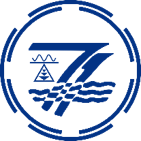Project „Computational Acoustics II - FEM-BEM Coupling‟
Objective of the project
The aim of the project is to extend the solution methods developed in the previous projects to determine the radiation behavior of simple and complex structures especially for coupled calculations with consideration of elastic materials or to reduce the solution times.
This includes investigations and tests regarding the use of new algorithms and solution methods as well as the adaptation to new high-performance hardware.
This research project is a continuation of the project „Computational Acoustics I”.
Co-workers
- Dr. Ralf Burgschweiger
Publications
The publications for this project can be found here.
Focus
- Extension of the fluid-structure coupling for thin shells by combining finite elements (FEM) with boundary element methods (BEM)
An extension of the matrix-based BEM solution process using a FEM approach for thin shells would significantly improve the quality of the results obtained, since the elastic material properties of the thin structure (keyword: bending wave) could be taken into account.
For this purpose, comprehensive extensions of the existing code for the required FEM-based calculations have to be designed and implemented, as well as the graphical user interface has to be extended accordingly. - Extension to indirect boundary element methods (IBEM)
An additional option is to extend the available BEM solution method to the so-called Indirect Boundary Element method, which allows approximation of thin shells based on pressure differences, that is, without the complexity of a full-coupled calculation. - Extension of the BEAM method to the time domain
Due to its high computing speed, the raytracing-based BEAM method is suitable for visualizing the radiation behavior of objects over a given period of time by means of an extension for the time domain. It thus allows a comparison with the measurements of e.g. acoustic cameras or sonar devices. - Extension of the postprocessor for imaging 2D visualization of results from the time domain
In order to be able to better evaluate and display the data that is calculated using the intended extension of the BEAM method for the time domain, the postprocessor is to be extended so that the determined values can be visualized in 2D.
In this case, the computational area may have to be divided automatically into corresponding subregions (also taking into account the interaction between object and soil) and the results obtained subsequently be combined. - Extension of the scenes to take account of optional interfaces
In order to be able to consider an interaction of existing structures with interfaces or borders (eg. soils, water surfaces or transitions between materials of different densities), it is necessary to investigate to what extent the existing code can be extended by the possibility of using these surfaces either on the basis of additional grid structures or virtually in the form of corresponding additional area parameters ("mathematical parameterization").
Support
This project is funded by the Maritime Research and Technology division (GF640, Acoustic Modeling) of the Bundeswehr Technical Center for Ships and Naval Weapons (WTD71), Eckernförde & Kiel, Germany.

